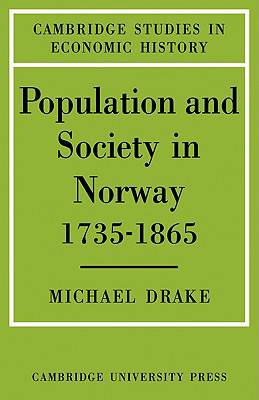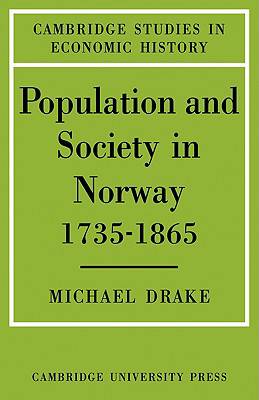
Door een staking bij bpost kan je online bestelling op dit moment iets langer onderweg zijn dan voorzien. Dringend iets nodig? Onze winkels ontvangen jou met open armen!
- Afhalen na 1 uur in een winkel met voorraad
- Gratis thuislevering in België vanaf € 30
- Ruim aanbod met 7 miljoen producten
Door een staking bij bpost kan je online bestelling op dit moment iets langer onderweg zijn dan voorzien. Dringend iets nodig? Onze winkels ontvangen jou met open armen!
- Afhalen na 1 uur in een winkel met voorraad
- Gratis thuislevering in België vanaf € 30
- Ruim aanbod met 7 miljoen producten
Zoeken
Omschrijving
In this detailed study of population change in Norway in the eighteenth and nineteenth centuries, Dr Drake has assembled a great deal of literary and statistical material. He pays particular attention to the interplay between marriage, economic conditions, social custom and fertility. The book also introduces English readers to the writings of Eilert Sundt, a very productive pioneer sociologist whose important work of the 1850s and 1860s is little known outside Scandinavia. Malthus's work, by comparison, is shown to be much less reliable. As Dr Drake demonstrates, remarkably reliable and comprehensive demographic statistics are available in Norway in the century before industrialization. This case study is therefore a valuable contribution to the debate amongst historians on the demographic characteristics of the pre-industrial west and the links between population change and industrialization. His conclusions are also clearly relevant to the current international discussion on the relationship between population change and economic and social conditions in under developed countries.
Specificaties
Betrokkenen
- Auteur(s):
- Uitgeverij:
Inhoud
- Aantal bladzijden:
- 284
- Taal:
- Engels
- Reeks:
Eigenschappen
- Productcode (EAN):
- 9780521085144
- Verschijningsdatum:
- 14/10/2008
- Uitvoering:
- Paperback
- Formaat:
- Trade paperback (VS)
- Afmetingen:
- 140 mm x 216 mm
- Gewicht:
- 362 g

Alleen bij Standaard Boekhandel
+ 121 punten op je klantenkaart van Standaard Boekhandel
Beoordelingen
We publiceren alleen reviews die voldoen aan de voorwaarden voor reviews. Bekijk onze voorwaarden voor reviews.











